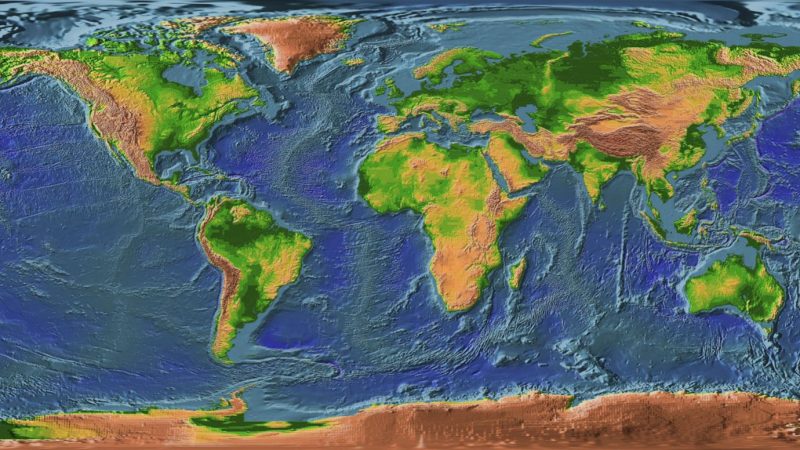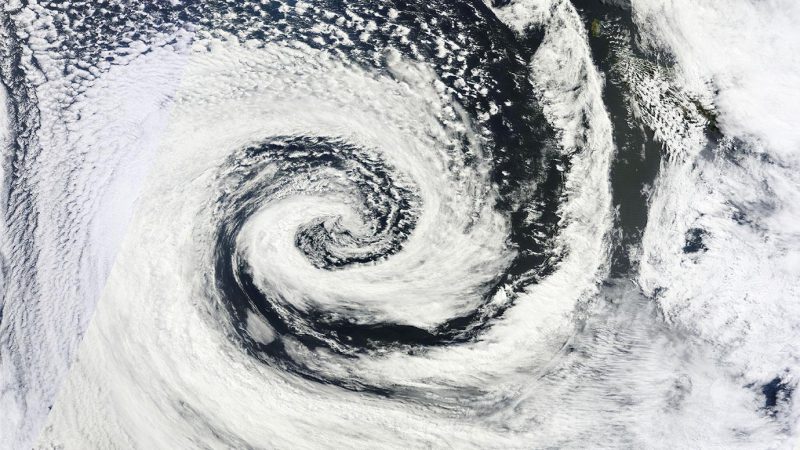
Southern Hemisphere stormier … why?
Mariners of old knew that true tempest-tossed seas awaited them in the Southern Hemisphere. Modern-day satellites have proved them right, showing that the Southern Hemisphere is about 24% stormier than the Northern Hemisphere. On December 5, 2022, scientists from the University of Chicago announced they now know why. Their study said the reason is twofold, blaming ocean circulation and large mountain ranges in the Northern Hemisphere.
What’s more, the scientists have seen changes just since the beginning of the satellite era of the 1980s. The data show that the disproportionate storms in the Southern Hemisphere have been increasing as the climate changes.
The scientists, led by Tiffany Shaw of the University of Chicago, published their study in the peer-reviewed journal Proceedings of the National Academy of Sciences on December 5, 2022.
Observing from above
Traditionally, weather observations had to be land based. With the advent of Earth-observing satellites in the 1980s, scientists could begin to understand more about the weather in the Southern Hemisphere, which has much less land than in the north. They found that the Southern Hemisphere does, indeed, have a stronger jet stream and more intense weather events.
Shaw and her team wanted to answer why, so they put together evidence from observations, theory and physics-based simulations of Earth’s climate. Shaw said:
You can’t put the Earth in a jar, so instead we use climate models built on the laws of physics and run experiments to test our hypotheses.
Using models to find the differences
In the study, they used a numerical model of Earth’s climate built on the laws of physics that reproduced the satellite observations. Then, the scientists removed variables one at a time to see how they changed the impact of storms.
First, they looked at topography. In their model, they flattened all the mountains on Earth. Without mountain ranges, there’s nothing to disrupt the air flow, which can reduce storms. The Northern Hemisphere has more land and, therefore, more mountains. In the simulation, an Earth without mountains eliminated about half the difference in storminess between the two hemispheres.
The second half of the puzzle was ocean circulation. The ocean is a conveyor belt for heat and energy. Water sinks in the cold Arctic, travels along the bottom of the ocean and then rises near Antarctica. This movement of water carrying heat creates an energy difference between the Northern and Southern Hemispheres. When the scientists eliminated this conveyor belt, the other half of the difference in storminess disappeared.
Increasing storms in the Southern Hemisphere
After keying in on the two reasons storms are different between the Northern and Southern Hemispheres, the researchers looked at why storms are increasing in the south. The data from satellites show that since the 1980s, the Southern Hemisphere is getting even stormier. Meanwhile, the Northern Hemisphere has not experienced a significant change on average in its storminess.
The researchers found Southern Hemisphere storminess changes were connected to changes in the ocean. While a similar ocean influence is occurring in the Northern Hemisphere, the absorption of sunlight due to the loss of sea ice and snow cancels out the effect there.
The scientists searched for an independent check on the accuracy of their models. They found that models used to forecast climate change as part of the Intergovernmental Panel on Climate Change assessment report also show increasing storminess in the Southern Hemisphere and negligible changes in the Northern.

Understanding weather and climate
The field of weather and climate is relatively young. The press release said:
It was only after World War II that scientists began to build models of the physics driving large-scale weather and climate.
This study helps to provide a deeper understanding of climate and what will happen as climate change accelerates. As Shaw said:
By laying this foundation of understanding, we increase confidence in climate change projections and thereby help society better prepare for the impacts of climate change. One of the major threads in my research is to understand if models are giving us good information now so that we can trust what they say about the future. The stakes are high and it’s important to get the right answer for the right reason.
Bottom line: Scientists have found that ocean circulation and mountain ranges in the Northern Hemisphere are key to why the Southern Hemisphere is stormier.
Source: Stormier Southern Hemisphere induced by topography and ocean circulation











